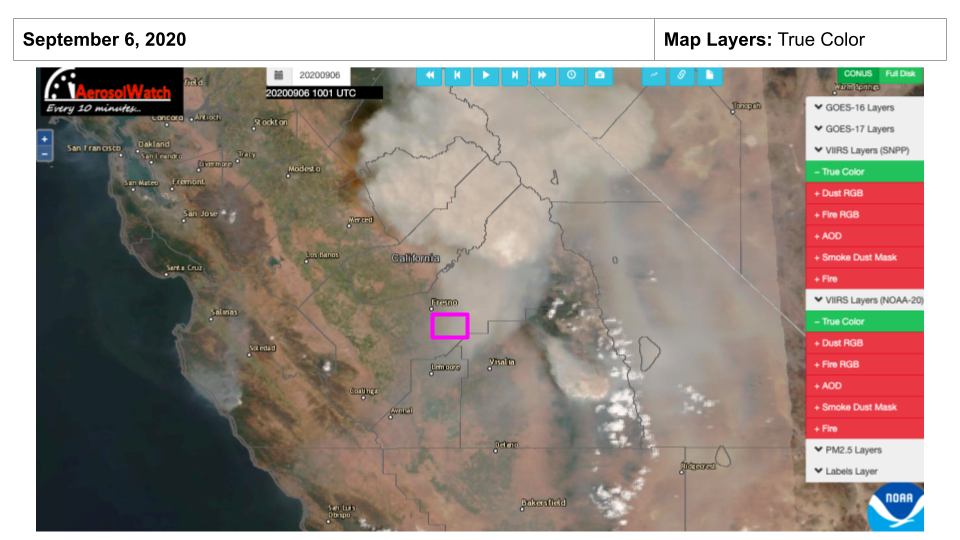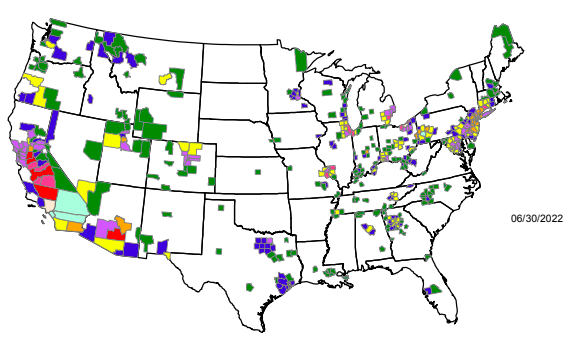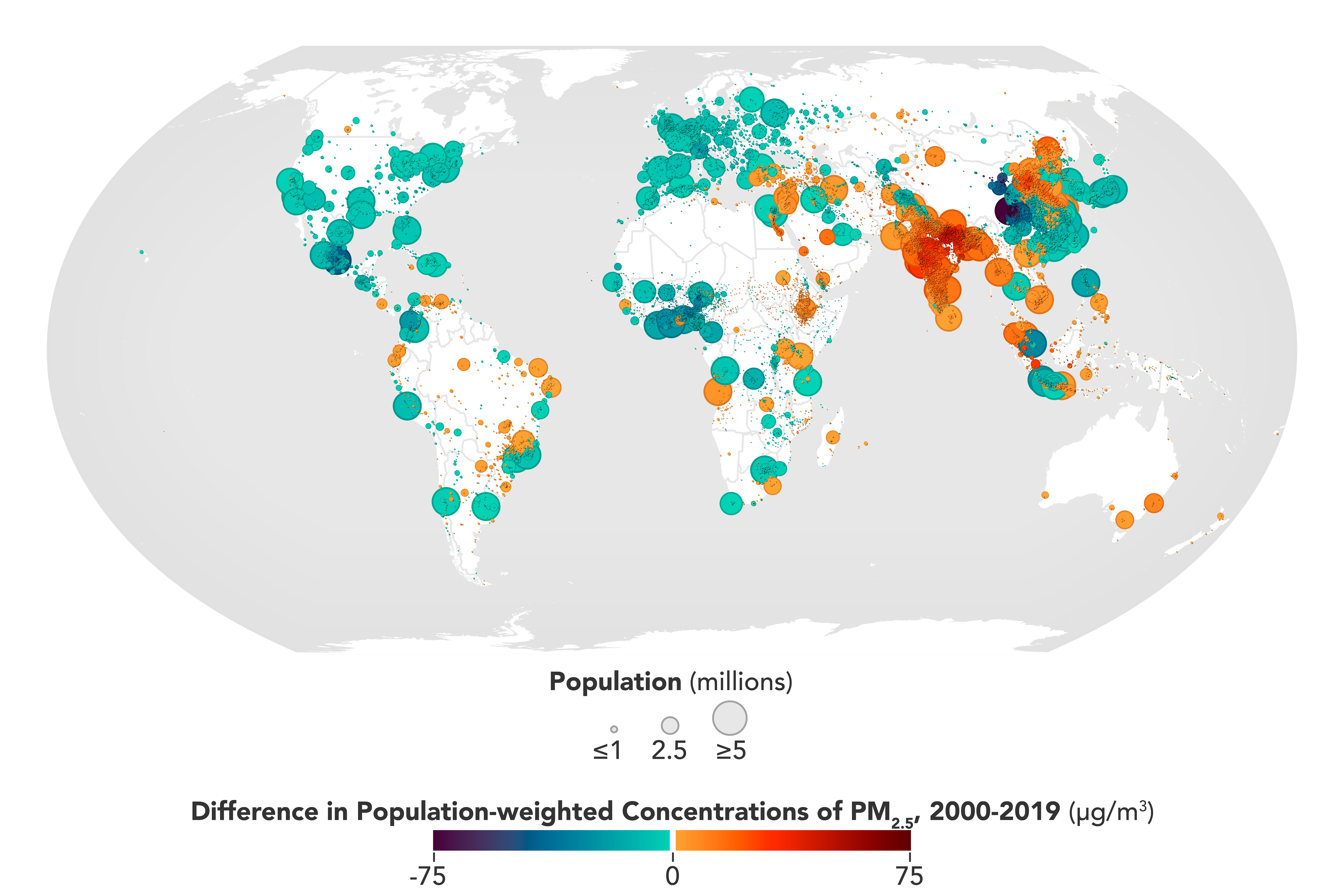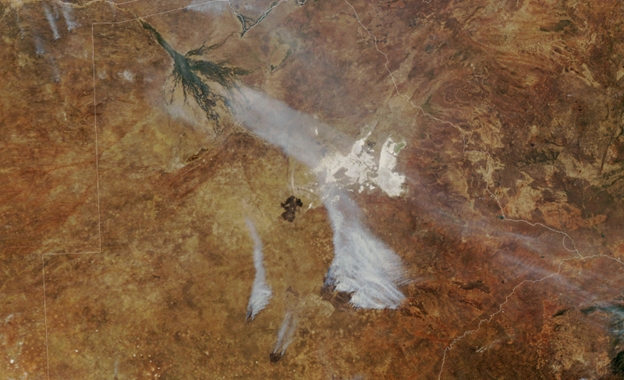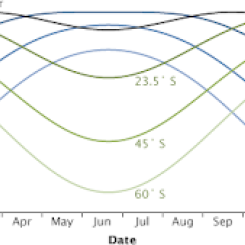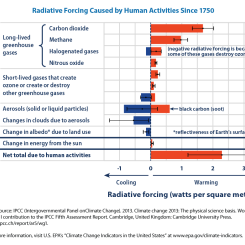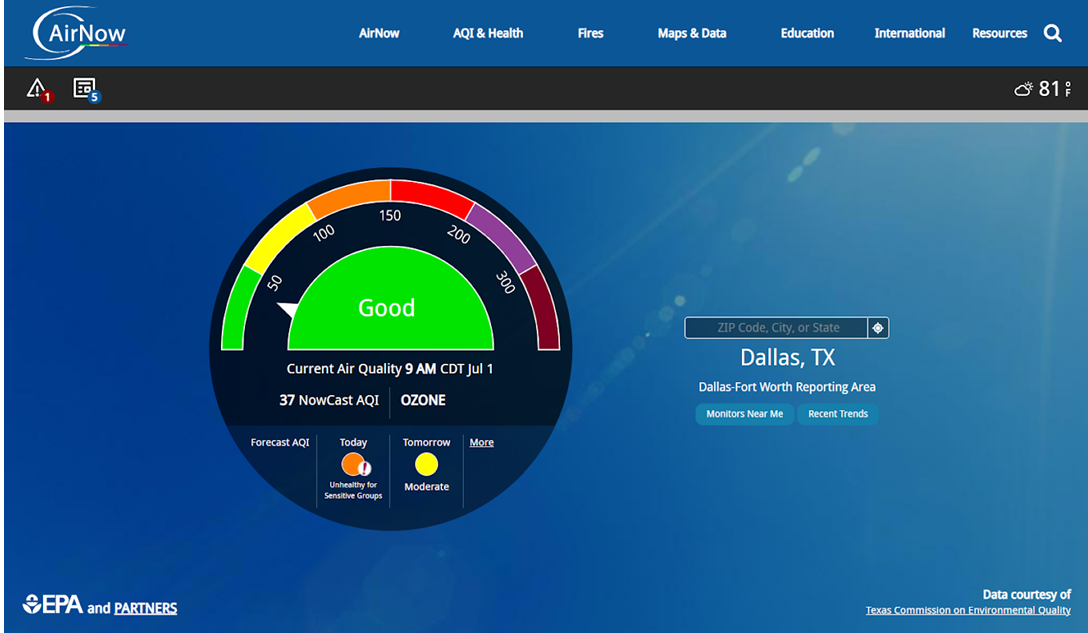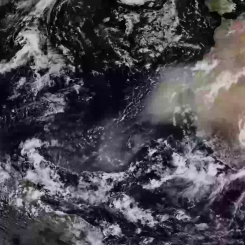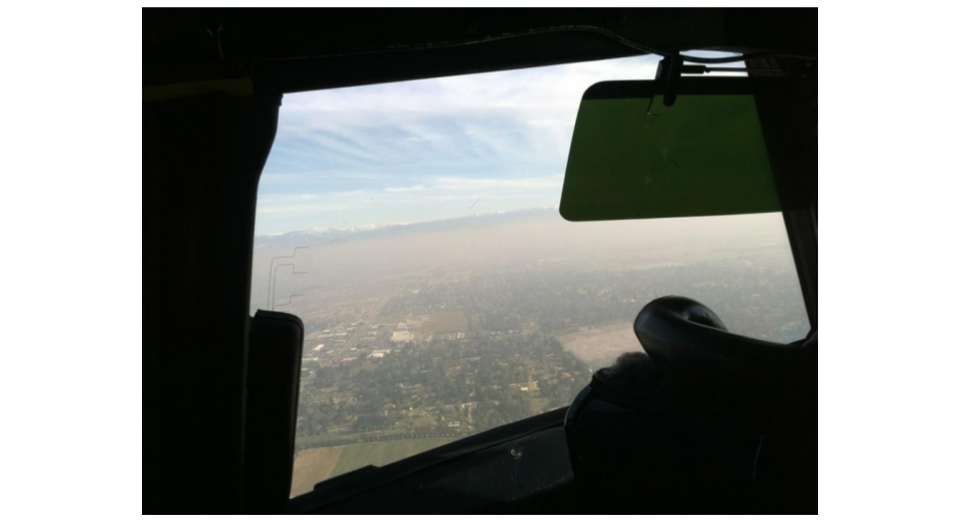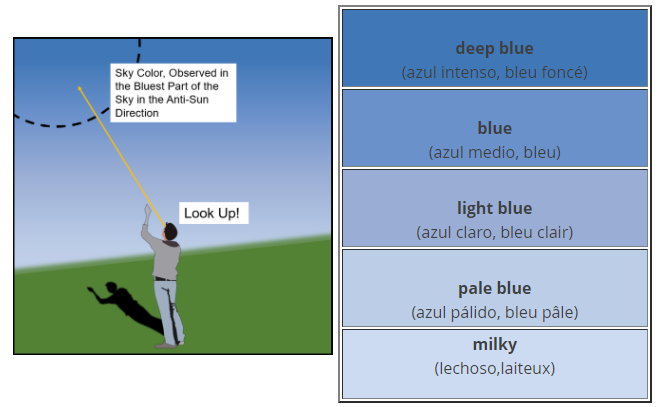Lesson Plans
AQI Social Media Post
Overview
Students interpret AQI maps and charts to compare today’s AQI with the past five days. Using the EPA’s air quality activity guides, students create a social media post for residents of their region providing key information related to today’s AQI.
Materials Required
- Devices with any weather app (1-2 per student group)
- Air Quality Index Data Sheet (printed- 1 per student)
- Air Quality Index (AQI) Basics (printed or posted on google classroom- 1 per student)
- AirNow Interactive Map Tutorial (printed- 1 per student)
- AirNow Interactive Map (posted on google classroom- can view)
- Social media post template (posted on google classroom- can edit)
- Activity guides (printed or posted on google classroom)
- Colored pencils (green, yellow, orange, red, purple)
- Colorful pieces of paper or sentence strip (1 per student group)
Procedure
Engage
Students will open the weather app on a device and answer the questions below. Two to three students can look at the same device.
- Does the app tell you the air quality?
- What information can you find out about today’s air quality?
- What scale is used for describing the air quality?
- Do you think weather apps should include air quality? Why or why not?
Explore
Materials:
- Each student gets a copy of the Air Quality Index Data Sheet
- Air Quality Index (AQI) Basics (printed or posted on google classroom)
-
Colored pencils that match the AQI colors as closely as possible.
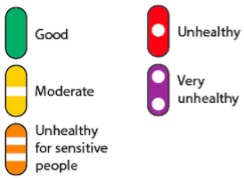
Air Quality Index Key
Credit: NASA
(https://mynasadata.larc.nasa.gov/sites/default/files/inline-images/AQI%20Key.png)
- Students read Air Quality Index (AQI) Basics (printed or on a device).
- Cooperative Learning: On a sentence strip or piece of colorful paper, students work with their group to write a definition of AQI in their own words.
- Each group shares their definition aloud with the whole class.
- Teacher summarizes key ideas that came up multiple times as groups shared out.
- Set-Up: Teacher projects the Air Quality Index Data Sheet and students have a paper copy in front of them.
- Teacher asks, “what do you notice about this chart?”
- Students put a star underneath today’s date.
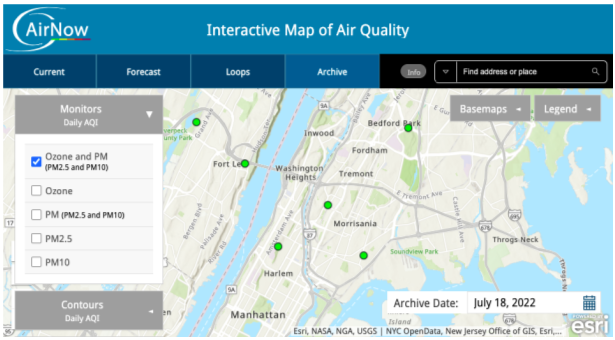
- Teacher demonstrates how to use the AirNow Interactive Map, highlighting key features shown on the AirNow Interactive Map Tutorial.
- Set-Up: (1 laptop per 2-3 students)
- Students follow the AirNow Interactive Map Tutorial to color in the Air Quality Index Data Sheet based on the archived AQI data from a monitor closest to their school.
Explain
Task: Create a social media post template for your region/town/city to inform residents about the air quality forecasted for today. Use the activity guides to help residents understand…
- What Ozone and PM AQI is forecasted for today
- Who needs to be concerned
- What certain groups of people should do to stay safe
- What actions schools should take to keep children safe given the air quality
- What residents can do to reduce ozone and particle pollution
- How today’s forecasted AQI compares to the past five days (look back at the Air Quality Index Data Sheet that you colored in)
- Key facts about ozone and particle pollution
- Images and visually appealing slides that will keep viewers’ attention as they look through the social media post
Evaluate
Teachers will use the rubric below to evaluate students’ social media posts.

Answer Key:
Teachers who are interested in receiving the answer key, please complete the Teacher Key Request and Verification Form. We verify that requestors are teachers prior to sending access to the answer keys as we’ve had many students try to pass as teachers to gain access.
Sources:
- Activity Guides Publications. (n.d.). AirNow.gov. Retrieved August 12, 2022, from https://www.airnow.gov/publications/activity-guides-publications/
- Air Quality Index - A Guide to Air Quality and Your Health. Brochure 2014. EPA-456/F-14-002. (n.d.). AirNow.gov. Retrieved August 12, 2022, from https://www.airnow.gov/sites/default/files/2018-04/aqi_brochure_02_14_0…
- AQI Basics. (n.d.). AirNow.gov. Retrieved August 12, 2022, from https://www.airnow.gov/aqi/aqi-basics/
- Barrette, A. (2018, September 29). 6 Common Myths About Air Pollution and What You Can Do About Them. Molekule Blog. Retrieved August 12, 2022, from https://molekule.science/common-myths-about-air-pollution/
- Home. (n.d.). YouTube. Retrieved August 12, 2022, from https://gispub.epa.gov/airnow
Disciplinary Core Ideas:
- ESS3C: Human Impacts on Earth Systems
Crosscutting Concepts:
- Cause and Effect
Science and Engineering Practices:
- Analyzing and Interpreting Data
- Obtaining, Evaluating and Communicating Information
Interpret AQI maps and charts to communicate accurate information about air quality.
- What can specific groups of people do to stay safe given the AQI in the region of our school?
- What actions should schools take to keep children safe given the AQI?
- How does today’s AQI compare to the past five days?
- What can residents do to reduce ozone and particle pollution?
Additional background information is available from the EPA in the Air Quality Index - A Guide to Air Quality and Your Health brochure.
Source:
U.S. EPA. (2014, February). Air Quality Index: A Guide to Air Quality and Your Health. U.S. EPA Office of Air Quality Planning and Standards Outreach and Information Division. Retrieved July 25, 2022, from https://www.airnow.gov/sites/default/files/2018-04/aqi_brochure_02_14_0…
- Air pollution in China always exceeds that of the US
- Air pollution is present only if you can see it
- The air quality is always better indoors vs. outdoors
- The air quality of natural areas always exceeds that of cities
Source:
Barrette, A. (2018, September 29). 6 Common Myths About Air Pollution and What You Can Do About Them. Molekule Blog. Retrieved July 22, 2022, from https://molekule.science/common-myths-about-air-pollution/
- Connection to the Clean Air Act in social studies or government classes
- Connection to impact of air pollution on human health in biology or health classes
- Connection to local geography and urban/rural development in social studies classes
- Internet Required
- One-to-a-Group
- Visualization Tool Required


